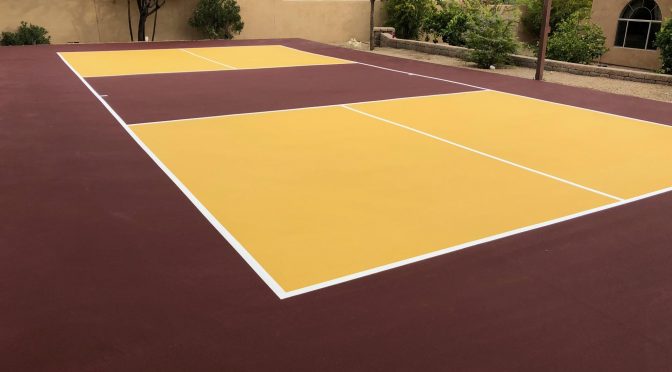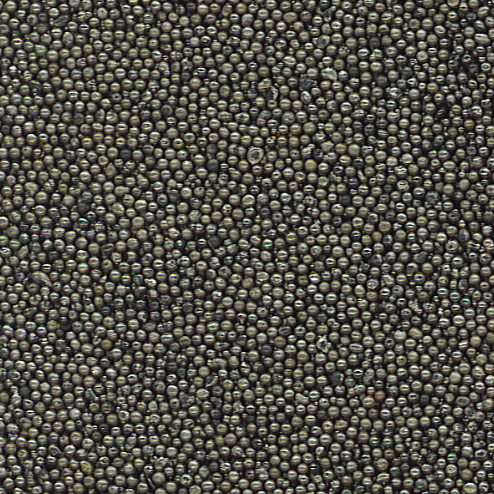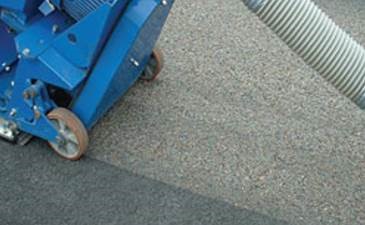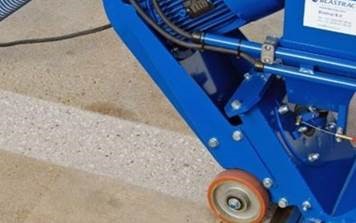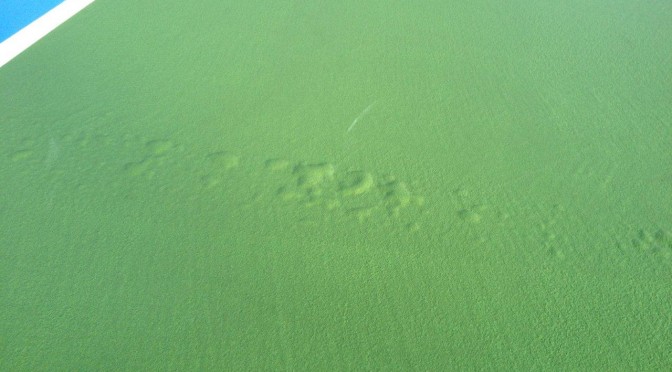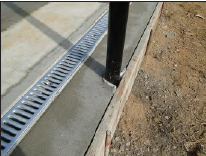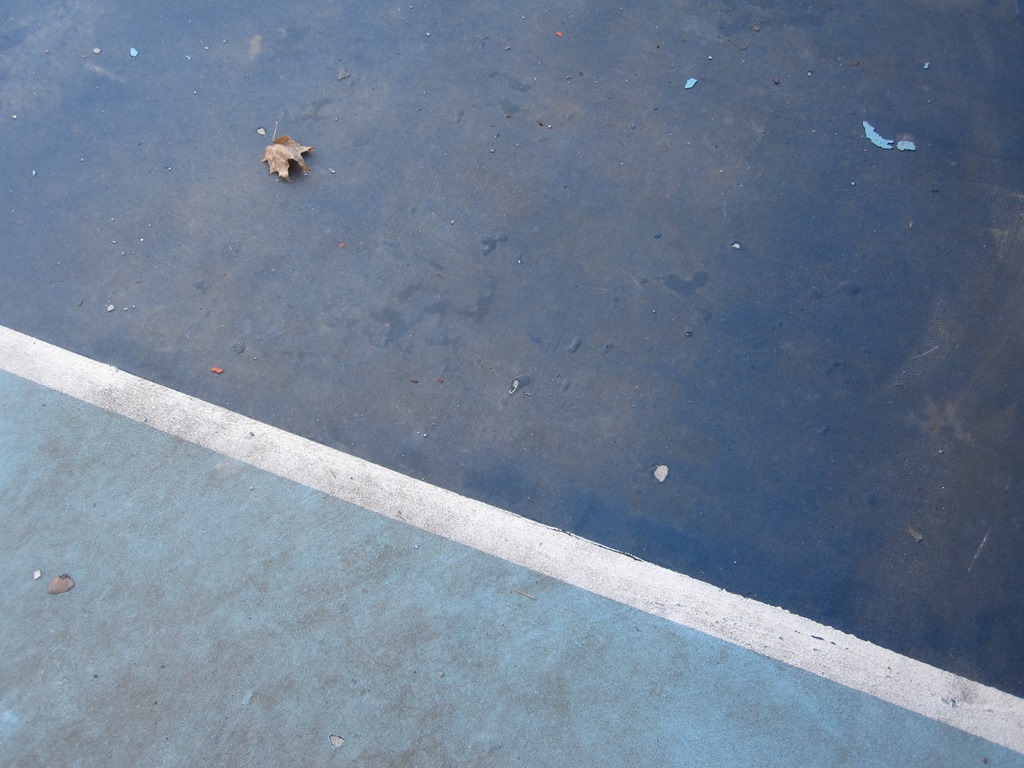A shot blaster is a machine that is commonly used to create a texture, or profile, on concrete. There are various sizes of “shot” that can be used in these machines. Shot blasters propel the shot particles, or media, onto the surface and suck it back in to create texture. Our coating systems, and many other coatings, need some texture on the surface to create a good physical bond. We recommend concrete being finished with a medium-broom finish, as opposed to a smooth trowel finish. Sometimes this doesn’t happen, so the best way to get a good texture profile is to shot blast the smooth surface.

This is also a good way to “open up” the concrete and remove potential curing compounds or surface residue that can cause bonding issues.
Shot Blast Profile For Tennis, Pickleball, and Basketball Court Surfaces
The shot blast industry has a shot blast profile chart that lists various levels of texture, created by the shot blast. It also ties each of the texture levels to a recommended thickness of coating system. In other words, the thicker the coating system build, the more texture needed on the surface. Our sport coating systems, based on the average thickness and factoring in multiple resurfacings over time, work well over a shot blast profile of CSP3 or CSP4. Don’t worry, if the shot blaster profile turns out with a little too much, Acrylic Resurfacer will fill in and hide the voids. This may require extra coats, but better to have more than less for good physical adhesion.
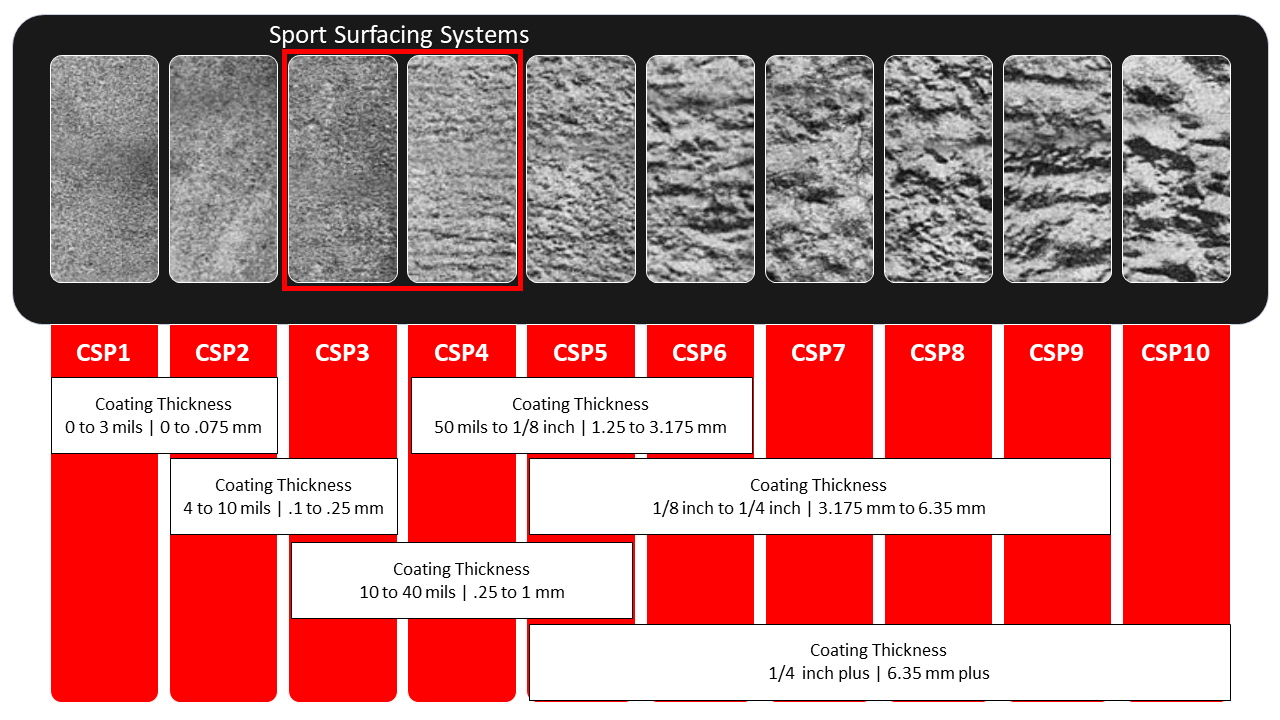
Where To Find Shot Blasters For Court Surfaces
Shot blasters come in various sizes and are commonly rented at equipment rental stores. Many times, flooring contractors that apply epoxy and polyurethane (industrial coatings) own these machines. It may be best to hire and/or subcontract this work to contractors with experience to get past the learning curve. They usually have larger ride-on models that get it done quickly, too.
What size shot media should you use?
When trying to achieve a CSP 3 or 4, there are multiple variables in play. You should try to obtain a medium-sized steel shot. This would generally be S390 or S460 steel shot.
However, shot size is not the only factor in producing the CSP 3 or 4 finish. Here are a few other considerations:
- Travel speed of the blaster: Slower speeds will create a more aggressive profile.
- Amount of shot released: A higher load will result in a more textured profile.
- Hardness and Condition of the Concrete: Denser, harder concrete will require more aggressive blasting to achieve the same profile.
Applying Sport Coatings on Concrete Surfaces | Specifications
To see the SportMaster engineering specification, which includes the basic steps of the process, click on the link below. This will open a .pdf version of the document.
Applying Sport Surfaces On Concrete
Visit our full page for more information on proper preparation of concrete sport surfaces.

